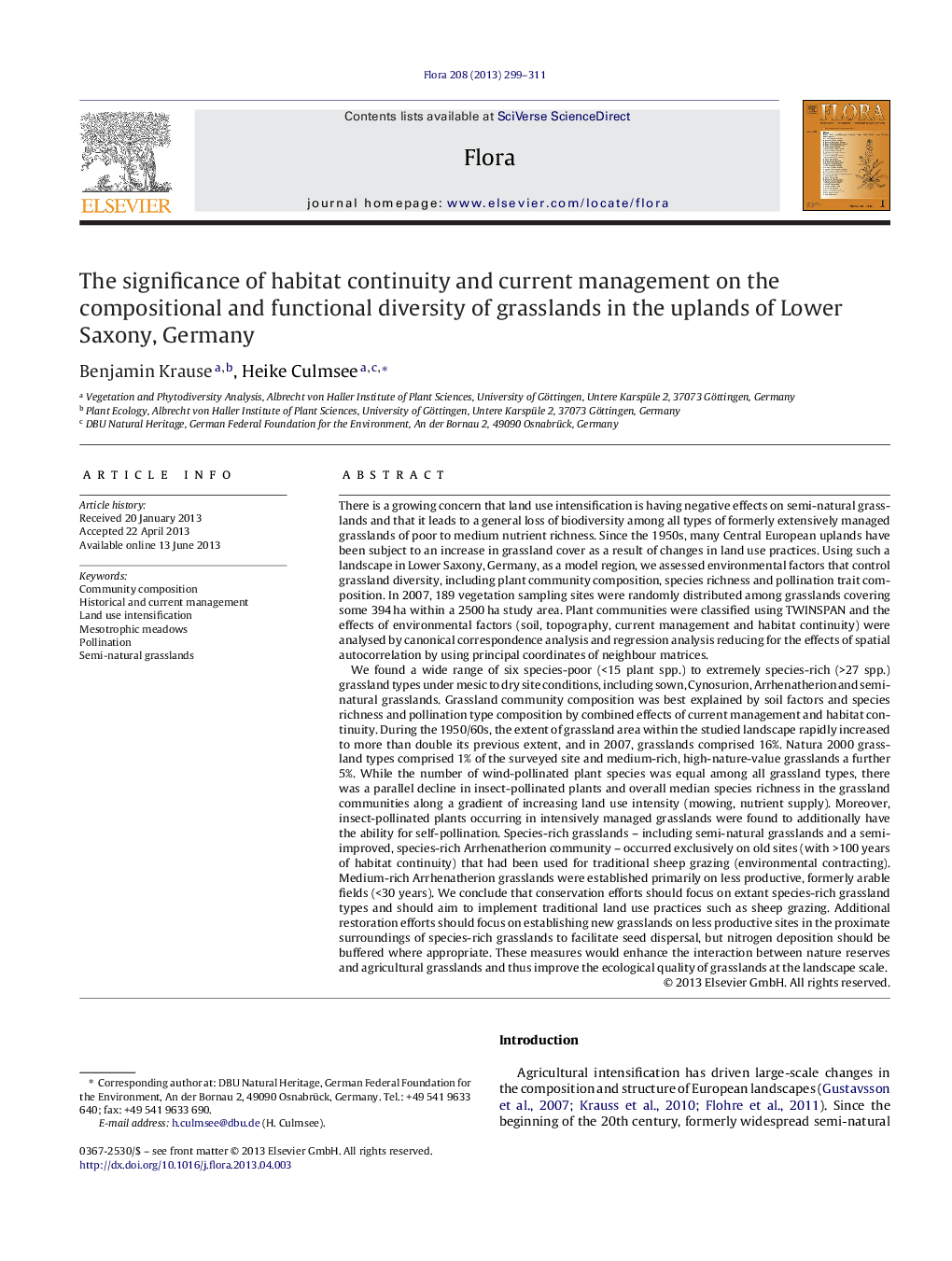| Article ID | Journal | Published Year | Pages | File Type |
|---|---|---|---|---|
| 2179706 | Flora - Morphology, Distribution, Functional Ecology of Plants | 2013 | 13 Pages |
Abstract
We found a wide range of six species-poor (<15 plant spp.) to extremely species-rich (>27 spp.) grassland types under mesic to dry site conditions, including sown, Cynosurion, Arrhenatherion and semi-natural grasslands. Grassland community composition was best explained by soil factors and species richness and pollination type composition by combined effects of current management and habitat continuity. During the 1950/60s, the extent of grassland area within the studied landscape rapidly increased to more than double its previous extent, and in 2007, grasslands comprised 16%. Natura 2000 grassland types comprised 1% of the surveyed site and medium-rich, high-nature-value grasslands a further 5%. While the number of wind-pollinated plant species was equal among all grassland types, there was a parallel decline in insect-pollinated plants and overall median species richness in the grassland communities along a gradient of increasing land use intensity (mowing, nutrient supply). Moreover, insect-pollinated plants occurring in intensively managed grasslands were found to additionally have the ability for self-pollination. Species-rich grasslands - including semi-natural grasslands and a semi-improved, species-rich Arrhenatherion community - occurred exclusively on old sites (with >100 years of habitat continuity) that had been used for traditional sheep grazing (environmental contracting). Medium-rich Arrhenatherion grasslands were established primarily on less productive, formerly arable fields (<30 years). We conclude that conservation efforts should focus on extant species-rich grassland types and should aim to implement traditional land use practices such as sheep grazing. Additional restoration efforts should focus on establishing new grasslands on less productive sites in the proximate surroundings of species-rich grasslands to facilitate seed dispersal, but nitrogen deposition should be buffered where appropriate. These measures would enhance the interaction between nature reserves and agricultural grasslands and thus improve the ecological quality of grasslands at the landscape scale.
Related Topics
Life Sciences
Agricultural and Biological Sciences
Ecology, Evolution, Behavior and Systematics
Authors
Benjamin Krause, Heike Culmsee,
